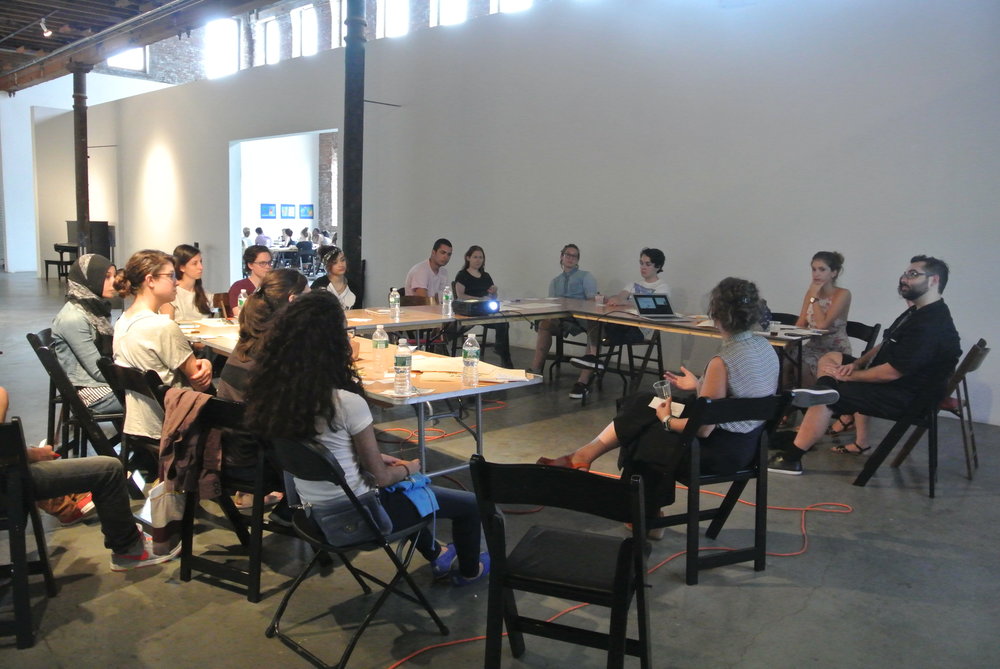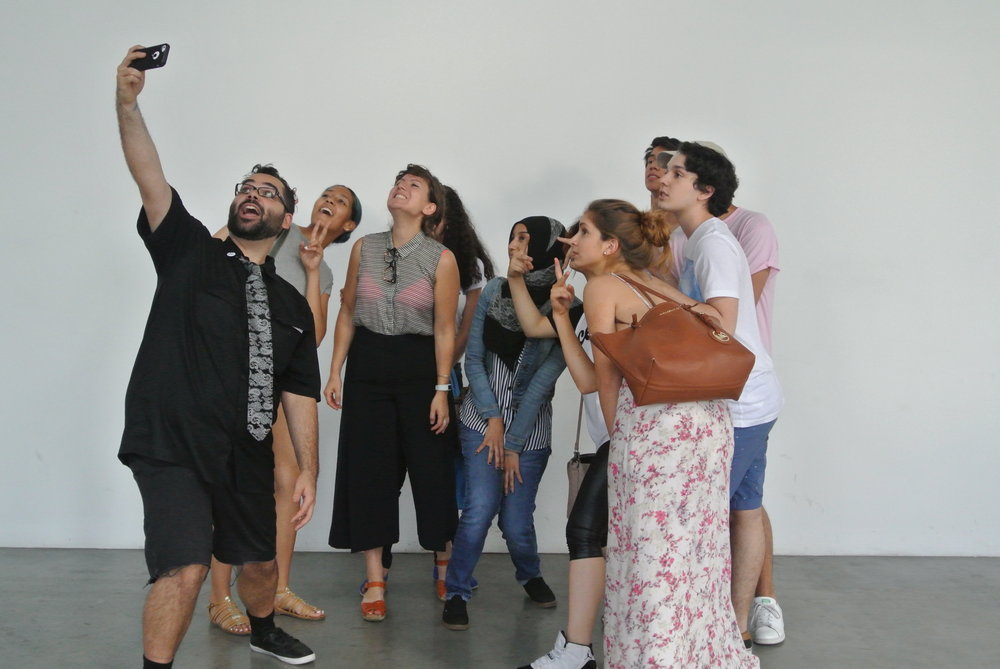
Courtesy of Nick Kozak.
Nick Kozak is an artist educator based in New York who joined the Art21 Educators community two years ago for the 2016-2017 school year. He’s been a public school teacher for nine years at Manhattan Hunter Science High School, focusing on art history. An artist himself, he creates social sculptures and is currently developing a body of work related to living in the Anthropocene. Dedicated to breaking down barriers between young people and adults, and between the classroom and the real world, Nick joins us as the Educator-in-Residence for our Winter 2018 issue, “Whose Public?”
Art21: Why do you believe the thinking and practices of contemporary artists are important to incorporate in the classroom? What do students get out of it that they might not otherwise?
Nick Kozak: At the moment, it’s never been easier for young people to find a comfortable media bubble to sit in and be complacent and entertained. I believe contemporary artists have an important role to play in shocking us out of all that, making us reconsider where we choose to focus our attention.
While I’m sure that most of my students don’t self-identify as artists, I believe that they all know the importance of thinking like an artist. This means constantly challenging themselves to manifest their ideas in new ways, and to be comfortable with the uncomfortable. I believe that being able to think like an artist is one of the most useful skills to have in twenty-first century living—it allows you to hone in on the layers of meaning and intention that are woven into every aspect of our lives.

Nick Kozak leads a group of students in a discussion for the interactive workshop at Pioneer Works, “Talk to Me.”
Art21: Why were you initially drawn to the Art21 Educators program?
NK: When joining Art21 Educators, I was hoping to find a professional learning community that I could engage with and draw inspiration from. I was in my sixth year of teaching, feeling like my curriculum was in a bit of a rut and some colleagues suggested I apply. The program definitely nudged me out of my comfort zone and pushed my professional practice in new directions. I would recommend it to any educators who are interested in taking their pedagogy to the next level.
Additionally, I’ve always appreciated Art21 in how they promote artists from all across the world, drawing our creative communities closer together. The resources they produce provide a window into the diversity of practices that exist in contemporary art-making.
Art21: How has Art21 Educators changed your practice, as both an educator and an artist?
NK: At my school, I’m the sole visual art educator and I’m constantly looking for new areas to expand my class content into. Art21 Educators has aided me in developing what I call a “kinetic curriculum,” one that grows and changes each year, evolving to reflect the times in which we live. In practice, this has taken the form of collaborations, field trips or dialogues with those outside of our immediate community. The program has helped me sustain these ambitions by providing me with a network of educators who are interested in new types of experimental pedagogy. For my peers that are not hampered by standardized tests handed down by their local state, Art21 Educators is a great way to keep curricular content fresh and engaging. There is something incredible about being able to directly connect with a fellow artist and educator that lives in a different part of our continent. Particularly at times of social-political division, this helps challenge notions of who our allies are, where they live, what they look like.

Nick Kozak takes a selfie with students after participating in the interactive workshop “Talk to Me.”
Art21: How does your work as an educator relate to the upcoming Art21 Magazine theme of “Whose Public?”
NK: For me, “public” is a beautiful and messy place. There are spaces where we are all sharing a part of our existence with one another, breathing the same air, experiencing the same ephemera and responding in completely different ways. As an artist, I’m particularly fascinated by the serendipitous elements that find their ways into our lives and end up challenging or reinforcing our worldviews. While walking through a public park, the most mundane of circumstances can shake up our social-emotional routine—it could be bumping into a stranger, a stray soccer ball that lands nearby, or a work of public art that we’ve walked by a thousand times and never paid attention to. Every day we’re offered an opportunity to try it again—or try something differently. A lot of these ideas about public space have informed the social sculpture I developed with my students called Citizens of Earth, which I’ll be writing more about later in this issue.

Nick Kozak participating in “The Language Gap,” a student-led discussion and collaboration between Kozak and artist Paul Pfeiffer at Art21’s 2015 art education symposium, Creative Chemistries.
Art21: What specific work of art, artist, or exhibition has recently inspired you or your teaching practice?
NK: I’m definitely influenced by the work of Luis Camnitzer, in particular, his “Teacher’s Guide” from the 2014 Under the Same Sun exhibition at the Guggenheim. He describes three educational approaches that help me contextualize the work I’m doing in my classroom while prepping a unit of study: There are Problems (ideas to consider), Projects (a call to action), and Questions (openness to disciplinary boundaries).
Camnitzer’s ideas definitely help me maintain my educational practice as one that operates on artistic principles—not bureaucratic ones. His work has helped me understand that I don’t need to balance my educational and artistic goals, but to fuse them together as two parts of the same practice. Now I’ve come to understand that educators can be amazing artists—since we’re constantly thinking about how our ideas are going to land with our audience, what’s going to challenge them, provoke them, soothe them, or inspire them to reach to new heights.



